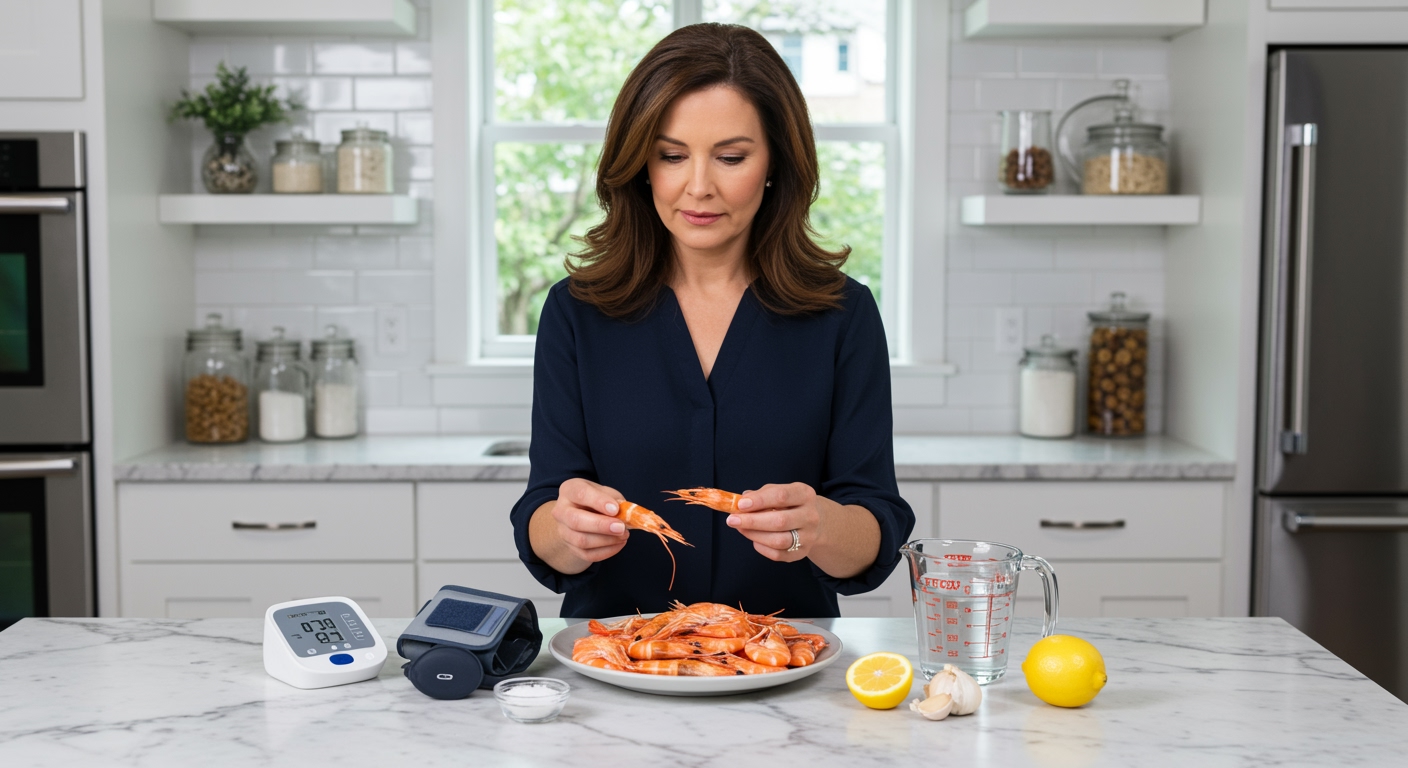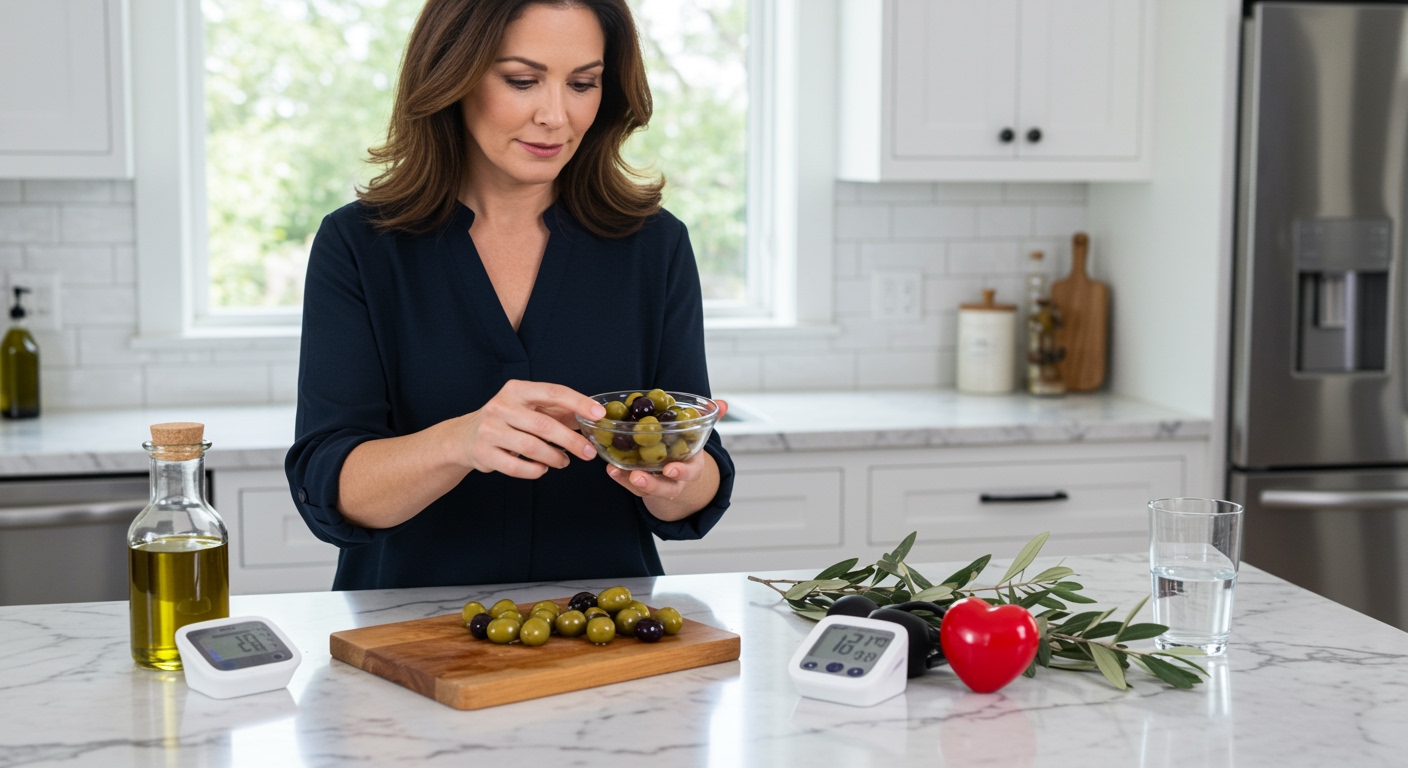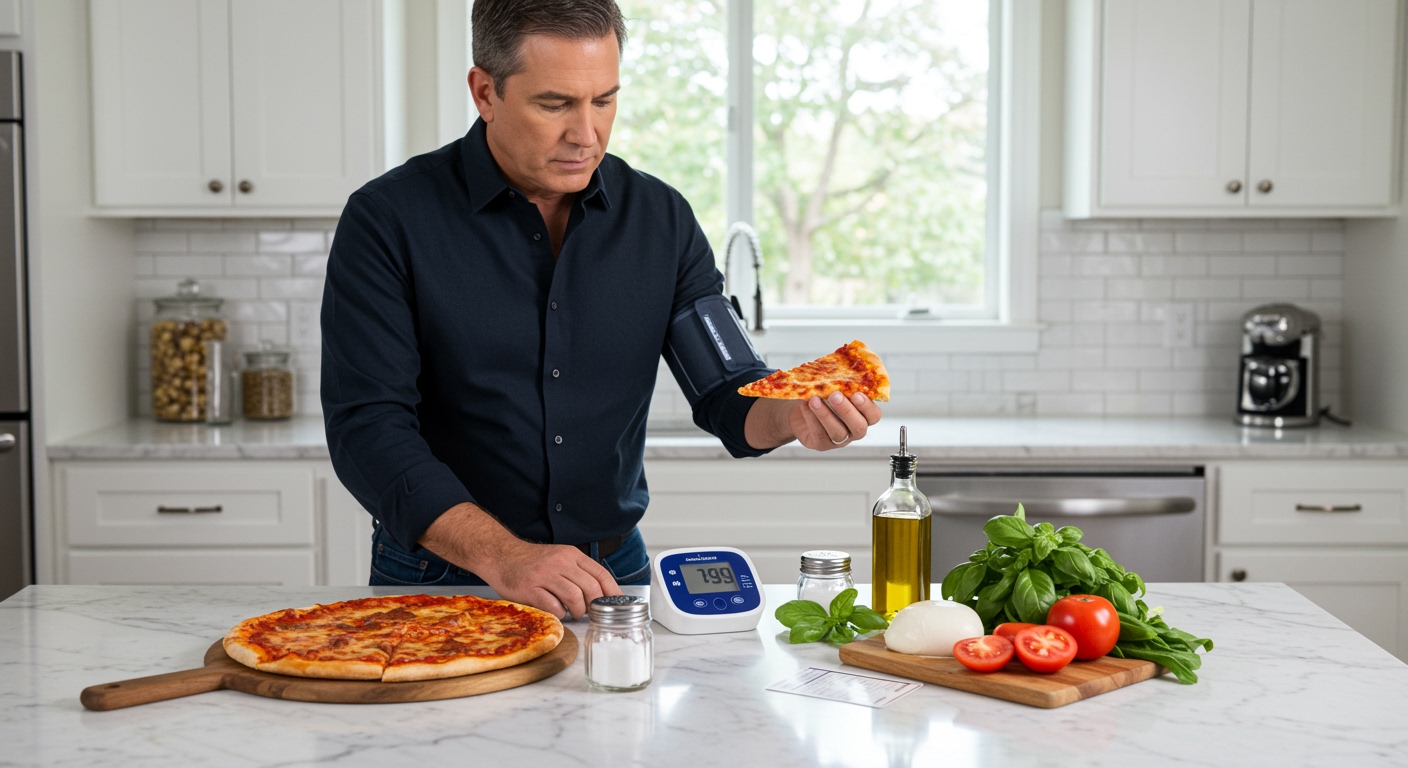✪ Key Takeaway: Shrimp can be part of a blood pressure-friendly diet when eaten fresh and prepared without added salt.
Introduction
Your doctor just told you to watch your blood pressure, and now you are staring at that plate of shrimp wondering if you should put your fork down.
You might be asking this question because shrimp has a reputation for being high in sodium, or maybe someone warned you that seafood could spike your blood pressure numbers.
Hi, I am Abdur, your nutrition coach, and today I am going to explain exactly how shrimp affects your blood pressure and whether you need to avoid it completely.
Does Shrimp Really Contain Too Much Sodium?
Fresh shrimp contains about 224 milligrams of sodium per 100 grams, which is higher than most fish but still reasonable for most people with high blood pressure.
The problem starts when you eat processed shrimp products like breaded shrimp, shrimp cocktail with sauce, or frozen shrimp that has been treated with sodium solutions.
These processed versions can contain 400-800 milligrams of sodium per serving, which pushes you dangerously close to your daily limit.
Your kidneys regulate blood pressure by controlling how much sodium and water your body retains.
When you eat too much sodium, your kidneys hold onto more water to dilute it, which increases blood volume and puts extra pressure on your artery walls.
However, the sodium in fresh shrimp is naturally occurring, not added during processing, which makes a significant difference in how your body handles it.
✪ Pro Tip: Always rinse frozen shrimp under cold water before cooking to remove excess sodium from processing solutions.
What Nutrients In Shrimp Actually Help Blood Pressure?
Shrimp provides several nutrients that can actually support healthy blood pressure levels when eaten as part of a balanced diet.
Omega-3 fatty acids in shrimp help reduce inflammation in your blood vessels, making them more flexible and able to handle blood flow changes.
The potassium content in shrimp, about 259 milligrams per 100 grams, helps counteract some of the blood pressure-raising effects of sodium.
Potassium works by helping your kidneys excrete more sodium through urine, which reduces the amount of fluid retention that raises blood pressure.
Shrimp also contains magnesium, which helps relax the smooth muscles in your blood vessel walls, allowing them to widen and reduce pressure.
The high-quality protein in shrimp supports the production of nitric oxide, a compound that signals blood vessels to relax and improve blood flow.
✪ Fact: Studies show that people who eat seafood regularly have lower rates of hypertension than those who avoid it completely.
How Should You Prepare Shrimp For Blood Pressure Control?
The way you prepare shrimp makes the biggest difference in whether it helps or hurts your blood pressure goals.
Grilling, baking, or steaming shrimp without added salt keeps the sodium content at its natural level while preserving the beneficial nutrients.
Skip the cocktail sauce, which can add 200-300 milligrams of sodium per tablespoon, and instead use fresh lemon juice, herbs, or garlic for flavor.
When buying shrimp, choose fresh or frozen varieties that list only shrimp as the ingredient, avoiding those with added sodium solutions or preservatives.
If you must buy processed shrimp, look for labels that say no salt added or chemical-free to minimize your sodium intake.
Pair your shrimp with potassium-rich vegetables like spinach, tomatoes, or sweet potatoes to create a more balanced meal that supports healthy blood pressure.
Remember that portion size matters too – a 3-ounce serving of shrimp provides plenty of protein and nutrients without overloading you with sodium.
✪ Note: Marinating shrimp in citrus juice and herbs for 30 minutes before cooking enhances flavor without adding sodium.
When Should You Limit Or Avoid Shrimp?
Some people with high blood pressure should be more cautious about including shrimp in their diet, depending on their specific health situation.
If your doctor has put you on a very low sodium diet of less than 1,500 milligrams per day, you might need to limit shrimp to once or twice per week.
People with kidney disease should consult their healthcare provider before eating shrimp regularly, as their kidneys may not process sodium as efficiently.
If you are taking blood pressure medications, especially ACE inhibitors or diuretics, your doctor might want to monitor your potassium levels more closely when you eat potassium-rich foods like shrimp.
Watch for signs that shrimp might be affecting your blood pressure, such as swelling in your hands or feet, headaches, or feeling unusually tired after eating it.
Keep a food diary for a few weeks to track how different preparations of shrimp affect your blood pressure readings and overall well-being.
✪ Pro Tip: Check your blood pressure 2-3 hours after eating shrimp to see how your body responds to it.
The Bottom Line
Shrimp can absolutely be part of a blood pressure-friendly diet when you choose fresh varieties and prepare them without added salt or high-sodium sauces.
The key to eating well with high blood pressure is not avoiding entire food groups, but learning how to prepare them in ways that support your health goals.
I would love to hear about your experience with shrimp and blood pressure – have you noticed any changes in your readings when you eat it, and what cooking methods work best for you?
References
At NutritionCrown, we use quality and credible sources to ensure our content is accurate and trustworthy. Below are the sources referenced in creating this article:
- PMC: Seafood Consumption and Components for Health
- American Medical Association: What Doctors Wish Patients Knew About Sodium Consumption
- American College of Cardiology: Seafood and Cardiovascular Health
- Global Seafood: Salt Sodium in Shrimp





